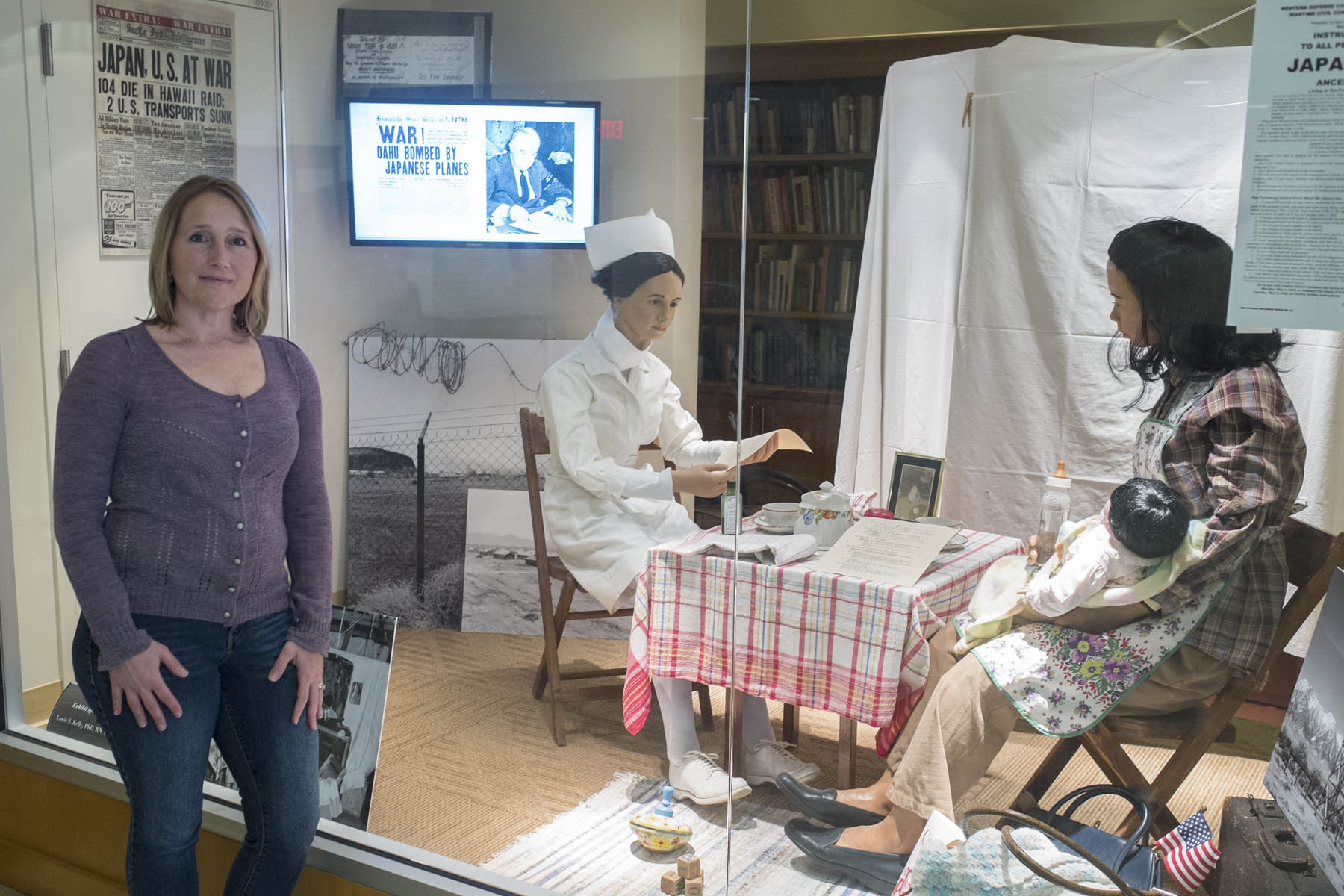As medicine heads into the future, University of Virginia nursing student Rebecca Coffin is taking her research into the past. Coffin, a Ph.D. student in the School of Nursing and a former Army nurse, is exploring the lives of nurses and patients who lived in the Japanese-American internment camps during World War II.
Coffin said she has long been intrigued by history, but with access to U.Va.’s Eleanor Crowder Bjoring Center for Nursing Historical Inquiry, her ability to delve into the depths of nursing history became limitless.
“This topic was there, but it wasn’t covered to the extent I thought it could be. It blended the undiscovered,” she said.
The center provided Coffin with the basis for her research and the freedom to further explore. Through archival documents and research, Coffin gained gradual insight into the dynamics of the camps’ nursing structure.
The World War II internment camps are seen by many as a blemish in American history; Coffin prefers to call them “incarceration camps.” Following the Japanese bombing of Pearl Harbor, Japanese-Americans living on the West Coast were confined to fenced camps due to their perceived threat. More than 80,000 lived in a prisoner-like state, many of them “Nisei” -- second-generation Japanese-Americans holding American citizenship.
Despite the spartan living conditions the Japanese-Americans were forced to endure, their medical needs were fully cared for by staffs of doctors and nurses.
While white Americans dominated the leadership among the nurses, the Japanese-Americans’ nursing skills provided necessary assistance that supported the camps. Japanese-Americans filled two roles, as either aides or nursing students pulled from their education, but able to provide further assistance as a result of their skill. In some cases, the skills and experience acquired in the camps were a means of escape, whether to an external job that valued their skills or as a way to return to nursing school.
Even with the close working conditions and the continuous care provided by the integrated groups of nurses, the white staff lived and ate separately from the Japanese-Americans, Coffin said.
This summer, Coffin further explored some of the camps in the West, thanks to an Arts, Humanities and Social Sciences Award, sponsored by the Graduate School of Arts & Sciences and the Office of the Vice President for Research. Her trip followed up a personal research trip taken last summer to camps at Poston, Arizona and Manzanar, California.
She went to the Japanese-American National Museum in Los Angeles, and continued to the National Archives at Riverside, California; Angel Island in San Francisco; the University of Wyoming’s Susan McKay Collection; and concluded her trip at the Heart Mountain Interpretive Center in Wyoming.
Each stop provided insight into the lives of both the incarcerated Japanese-Americans and the nurses who treated them. Through document analysis, tours of the museums and camps, along with casual conversation, Coffin gained insight into the past.
Unfortunately, many of the camps’ remains are limited. “They really just tore down all the camps after, like nothing happened,” Coffin said.
While the documents and interviews advanced Coffin’s research, she was fortunate that minimal remains of the Heart Mountain Interpretive Center hospital still stand. According to Coffin, “just about everything else is gone, as is the case for most of the camps.”
During her research, Coffin gained insight into the care at Heart Mountain, which was praised by its patients. “[The camp] published a weekly newspaper [where] residents could place personal ads. A few months in to the publication, one ad appeared that thanked the doctors and hospital staff for the care that a patient received while in the hospital,” she said. “After that ad, numerous ads appeared every week, people thanking hospital staff and doctors for their care and attention.”
Despite this discovery, Coffin remains cautious of how genuine the ads were. “Here they were incarcerated in a camp, far away from home, their lives disrupted, full of uncertainty – what could be good about anything in those camps?” she said. “I have to consider whether the ad was heartfelt or was this a cultural thing – probably some of both.
“The data I have so far leads me to believe that most nurses were compassionate and gave the best care they could,” Coffin said.
Coffin’s research will not involve personal interviews with surviving nurses or Japanese-Americans who were incarcerated, “I spoke casually to some Japanese-Americans whose parents had been incarcerated in the camps,” she said. “I got a real sense of the anger, devastation, frustration, disappointment that they experienced.”
Coffin noted invaluable resources her trip provided, including oral interviews and notes she obtained from both the Susan McKay Collection and the National Archives at Riverside. The material includes perspectives of white and Nisei nurses, which she will compare as part of her research. It also provides insight into patient care, including the difficult discovery of a death at one camp.
“The real gems are the personal records, diaries and letters,” Coffin said. “Unfortunately, there isn’t a lot of that because traditionally nurses didn’t write that down. But it also makes it fun trying to link those pieces together in my role and [research] argument.”
While her travel may be done, her research is far from over. Coffin is planning to complete her dissertation proposal defense this fall and will officially begin her dissertation afterward.
Though Coffin may have traded in her scrubs for the time being, she still sees how the past influences the modern care provided by nurses.
“They say, ‘Everything old is new again.’ The new thing in nursing is cultural competency, how to work with people from other cultures to ensure we are addressing all their needs,” she said. “Here is this example from 70 years ago where this hierarchy is serving this group of Japanese-Americans. I think a lot of the issues that they had back then are really, when you get down to it, the same now.”
Media Contact
Article Information
August 15, 2014
/content/phd-student-explores-west-research-history-nursing

